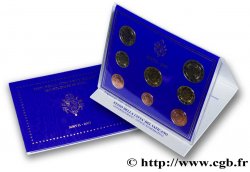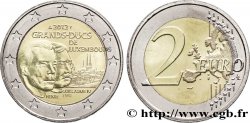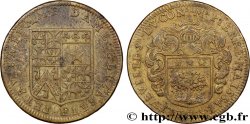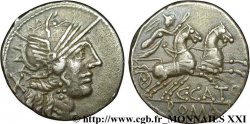v21_2045 - MARCIA Denier
MONNAIES 21 (2004)
Startpreis : 200.00 €
Schätzung : 300.00 €
Erzielter Preis : 280.00 €
Anzahl der Gebote : 5
Höchstgebot : 280.00 €
Startpreis : 200.00 €
Schätzung : 300.00 €
Erzielter Preis : 280.00 €
Anzahl der Gebote : 5
Höchstgebot : 280.00 €
Type : Denier
Datum: 129 AC.
Name der Münzstätte / Stadt : Roma
Metall : Silber
Der Feingehalt beträgt : 950 ‰
Durchmesser : 17,5 mm
Stempelstellung : 4 h.
Gewicht : 3,82 g.
Seltenheitsgrad : R1
Kommentare zum Erhaltungszustand:
Exemplaire de haut relief avec une jolie patine de médaillier à reflets bleutés irisés. Revers historiquement important
N° im Nachschlagewerk :
Pedigree :
Cet exemplaire provient du fonds Bourgey
Vorderseite
Titulatur der Vorderseite ANÉPIGRAPHE.
Beschreibung Vorderseite Tête casquée de Rome à droite ; derrière, marque de valeur (XVI) en monogramme.
Rückseite
Titulatur der Rückseite ROMA À L’EXERGUE ; Q. PILIPVS AU-DESSUS.
Beschreibung Rückseite Cavalier (Philippe V de Macédoine) galopant à droite, portant un casque avec cimier, tenant une lance de la main droite et les rênes dans la gauche ; derrière, le casque royal macédonien orné de cornes de bouc.
Übersetzung der Rückseite "Quintus Philipus// Roma", (Quintus Philippus// Rome).
Kommentare
Pour ce type, M. Crawford a relevé une estimation de 89 coins de droit et de 111 coins de revers. Ce denier est largement imité par les peuples de la vallée du Rhône sur leurs deniers (LT. 5715-5943), monnayage générique plus connu sous le nom d’imitations du type des Dioscures, bien que le revers des deniers gaulois ne comporte qu’un seul cavalier et non pas deux. Pour Serrure, Barthélemy et Blanchet le denier de Quintus Marcius Philippus serait le prototype de revers du denier des Dioscures. S’il est bien le prototype des deniers de la Vallée du Rhône, cette imitation ne pourrait être antérieure à 128 avant J.-C.
For this type, Mr. Crawford noted an estimate of 89 obverse dies and 111 reverse dies. This denarius is widely imitated by the peoples of the Rhone Valley on their denarii (LT. 5715-5943), a generic coinage better known as imitations of the Dioscuri type, although the reverse of the Gallic denarii only has one rider and not two. For Serrure, Barthélemy and Blanchet, the denarius of Quintus Marcius Philippus would be the prototype of the reverse of the Dioscuri denarius. If it is indeed the prototype of the Rhone Valley denarii, this imitation could not be earlier than 128 BC
For this type, Mr. Crawford noted an estimate of 89 obverse dies and 111 reverse dies. This denarius is widely imitated by the peoples of the Rhone Valley on their denarii (LT. 5715-5943), a generic coinage better known as imitations of the Dioscuri type, although the reverse of the Gallic denarii only has one rider and not two. For Serrure, Barthélemy and Blanchet, the denarius of Quintus Marcius Philippus would be the prototype of the reverse of the Dioscuri denarius. If it is indeed the prototype of the Rhone Valley denarii, this imitation could not be earlier than 128 BC







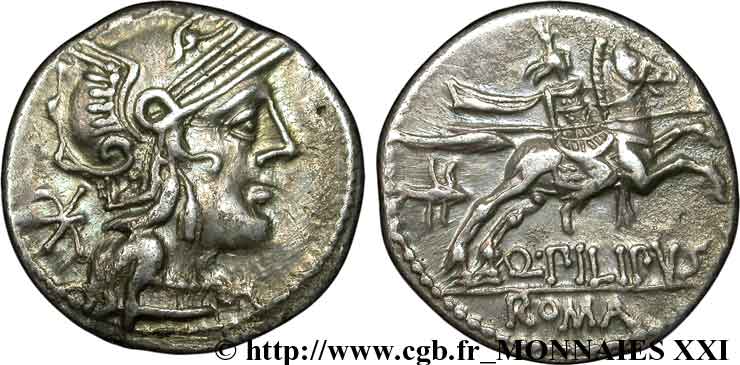
 Berichten über einen Fehler
Berichten über einen Fehler Die Seite drucken
Die Seite drucken Teilen meiner Auswahl
Teilen meiner Auswahl Stellen Sie eine Frage
Stellen Sie eine Frage Einlieferung/Verkauf
Einlieferung/Verkauf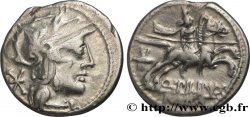
 Details
Details